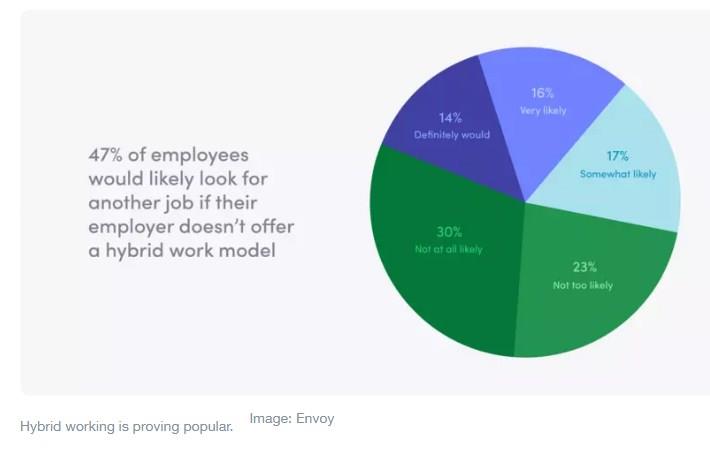by Jackie Bischof*
Silvina Moschini is in the business of remote work. As the founder of SheWorks!, a digital platform focused on remote working opportunities for women, and president of TransparentBusiness, a remote workforce management company, her entire career has focused on running remote teams.
So Moschini says she was shocked recently when a longtime, treasured colleague came to her with the news that she wanted to resign. Why had her employee not felt compelled to say anything? “I told her that I would be sad if she leaves, but I am even sadder that she didn’t bring the topic to me, and that she had to go through all this stress to tell me she wants to leave.” Her colleague was upset by a leadership change that had happened in the organization, and didn’t want to be seen as undermining her manager. They worked things out.
Even the most thoughtfully designed distributed workforce can have hiccups when it comes to dealing with tensions and conflict, from identifying it when it happens, to dealing with it quickly.

The advent of hybrid work has also introduced a new dynamic into working lives which is compounding people’s already frayed nerves, says Mark Mortensen, a professor of organizational behavior at INSEAD business school whose research has focused on remote work. Just as we got used to running everything in the cloud, we now have a new opportunity for friction: balancing the needs of people who have started coming back into the office with those who have chosen to remain at home.
“The playing field is changing,” Mortensen says. “It’s like we’re trying to play a sport, and the rules are changing constantly, and the field is getting longer.”
Moschini’s situation was a reminder that employees need to feel comfortable sharing their challenges, and that there’s value in admitting when things aren’t perfect. “If there was a mistake that was made consciously or unconsciously by the leader—just say it so,” she says. “Vulnerability really pays off, because your people, your team, need to know that you are not a machine. And we are all co-responsible for making things work.”
What does that co-responsibility look like, almost two years after the coronavirus pandemic upended our world? To start, it’s helpful to remember how big of a disruption that was.
Why conflict can be hard to manage remotely
People tend to struggle with difficult conversations in any context. But at work, it can be hard to separate the personal from the professional. While some conflict can aid innovation, it needs to be dealt with productively. Otherwise, it risks triggering our “fight or flight” response—and there’s not that many places to run to in an office.
The pandemic and the sudden shift to remote work made that even harder. Everyone who wasn’t working on a distributed team had to learn to do so, as the world around them shifted dramatically. We’re only just starting to see the effects that changes wrought by the pandemic are having on the workforce.
Even teams that are used to remote work can struggle to productively deal with arguments. Technology can make it difficult to talk those things through, from connection glitches interrupting conversations, to not having a full sense of what another person is working on or their context, and not being able to process the full richness of their reactions, as you would face-to-face.
Problems can also fester due to under-communication and in the absence of trust (something that is often generated over multiple in-person interactions, and has to be built intentionally amongst remote teams).
“When it comes to working remote and hybrid, you have to pay for the stuff that used to come for free,” says Mortensen, describing how critical it is that companies work to replicate the casual, real-life interactions that help employees connect, commune, or vent.
Managers of remote teams need to have a heightened sense of awareness, says Massimiliano Tirocchi, the Uruguay-based co-founder and CMO of e-commerce group Trafilea, which at only seven years old has 400 employees in more than two dozen countries. The company has been largely remote since it began. He’s heard peers say, “since we are not in the office, we are having less drama. [But] that is not really what is happening,” he says. Rather, the drama is just “translating to a different tool,” like Slack or email.
Err on the side of over-communicating
Remote and hybrid work needs to be very specifically designed to reduce friction—such as creating work handovers over time zones—but you also have to create an environment for letting off steam in a productive way, and sometimes embrace disagreements in the moment. In the last two years, working “relationships have shifted and changed to feel thinner and weaker,” Mortensen says. “That affects how much time and effort we put into resolving these conflicts, and how well we are able to do that.”
You’ll head off an eruption of emotion, or be more equipped to have productive conflict, if you’re consistently letting teams talk through what’s working or not. These kinds of regular check-ins are often described as “pulse checks.”
Don’t air this as an opportunity for people to moan about something—or somebody—they’re angry with, Mortensen says. Rather “frame it as, ‘Here’s how I need your help.’” You’ll get a more positive (and probably useful) response.
Being intentional about workflow, giving space for people to talk—these acts are all in the service of creating a work environment where employees don’t have to wait for a meeting to discuss something. They feel empowered to talk to their managers about an issue, because they’ve created the space to allow them to do so.
When complaints began to surface between Trafilea’s marketing and product teams that changes were not being made fast enough on the company’s website, an investigation unveiled a conflict over resource allocation that had been lingering for months.
CMO Tirocchi was taken aback. As a wholly distributed firm, Trafilea has a hiring and onboarding process that specifically highlights to employees how much the company values radical transparency and feedback. “We coach our managers and leaders to make sure that they are open to having conversations with talent, and really understand and deep dive into what is the real truth,” he says. Each department has “people business partners” who are on hand to mediate conversations and come up with solutions.
That worked within teams, but in the case of the cross-departmental conflict, Trafliea discovered that managers were not talking to each other, people were working at cross-purposes, and the problem had begun to impact the company more broadly. It took an extensive process of bringing together the project managers and people business partners of the affected departments, and pairing them with process analysts to walk through the perspectives and workflows that were at the core of the conflict. This helped to get the teams on the same page about objectives, and how to communicate around them.
“In the end, people like their company because they believe in the same purpose, the same mission, and they’re aligned with the core values. So when they understand that they need to detach from their own perspective about things and conflicts, they really understand better where they need to go,” Tirocchi says.
Moschini’s guiding principle when it comes to conflict is to “make explicit the implicit,” from communicating precisely what you need, to making sure you agree on definitions of the terms you’re using. “Even the concept of flexibility could be understood very flexibly,” she says.
This proved the case for Carin Taylor, the chief diversity officer for Workday, who had to work through a conflict with a colleague over a series of remote conversations. “I do think that being in this remote environment has made us think differently about how we communicate with one another…and removed some of the barriers of that discomfort of being in-person,” Taylor says.
If you need to hash something out, it’s helpful to set up “rules of engagement” ahead of time. These could include agreeing to talk with the camera on, and potentially bringing in a mediator. Taylor says she found it helpful to acknowledge that the conversation was going to be uncomfortable, stating that the purpose was to “create a safe space for both people to be heard,” and building in breaks.
“One of the things that became really important was to give each other a pause and allow [each other] to adjust, process, think about what was going on, take a break and then come back and have the conversation,” Taylor says. “I remembered walking away from the conversation afterwards, just feeling so much more refreshed from the fact that I had taken that break, [and in] a better state than what I thought I was going to be.”
Mortensen, together with conflict expert Amy Gallo, also suggests starting the conversation with what you share in common, and working to understand each other’s experiences by asking questions like: “How are you seeing this situation? What am I missing?”
“Meet your employees where they are, and understand that [you] have to come up with different solutions for different situations,” Taylor says.
The value of perspective taking
A common theme among the leaders interviewed for this piece was the power of asking people involved in an argument or tense discussion to consider the other person’s view. This may sound like common sense, but in a hybrid environment, especially one that has sprung from a once-in-a-lifetime pandemic, this needs to be an intentional request. Teams who aren’t in the same physical space are still equally capable of teaming up against each other.
Mortensen recalls chairing a department that was split across two different locations, France and Singapore, but working towards a common organizational goal. He began to notice that people were becoming polarized based around different issues, and in some cases, geographically.
The first thing he tried to do was remind people, “that we are first and foremost a we,” as opposed to an “us and them.” The second was to start asking people to try and understand why their counterpart might have done something.
“Perspective-taking remains probably the most critical and undervalued tool in leadership and management,” he says. The act of “accepting [another person’s reality] and then saying, ‘OK, given that, would I behave in the same way? To me that unlocks incredible doors.”
*Deputy Editor, Quartz
**first published in: www.weforum.org




 By: N. Peter Kramer
By: N. Peter Kramer
